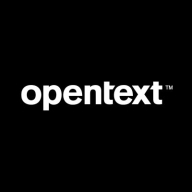

OpenText Core Application Security and CodeSonar provide robust solutions in the application security space. Users often prefer CodeSonar due to its speed, detailed results, and precise log configurations, while OpenText Core is favored for its comprehensive compliance capabilities.
Features: OpenText Core Application Security offers HIPAA compliance, static and dynamic analysis, and integration capabilities that ensure minimal operational disruption and effective remediation. CodeSonar excels with its speed in analysis, detection precision, and user-friendly interface, simplifying the identification of potential vulnerabilities and errors.
Room for Improvement: OpenText Core Application Security encounters criticism for frequent false positives, a need for more visually engaging reports, and scanning times that require improvement. It also faces integration challenges with existing systems. CodeSonar requires enhancements in language support and more advanced static analysis tools, with users noting its limited application to specific coding standards.
Ease of Deployment and Customer Service: OpenText Core Application Security supports diverse deployment through private, public, and hybrid clouds but faces challenges in providing efficient customer service and technical support. CodeSonar consistently performs well in both on-premises and cloud environments with commendable customer service but still receives some criticism for timely responses and technical assistance depth.
Pricing and ROI: Both OpenText Core Application Security and CodeSonar are viewed as expensive with pricing concerns related to license numbers and project scale. However, both are seen as worthwhile investments due to the significant security improvements and reduction in security incidents they provide.
| Product | Market Share (%) |
|---|---|
| OpenText Core Application Security | 3.4% |
| CodeSonar | 1.3% |
| Other | 95.3% |


| Company Size | Count |
|---|---|
| Small Business | 5 |
| Midsize Enterprise | 1 |
| Large Enterprise | 2 |
| Company Size | Count |
|---|---|
| Small Business | 17 |
| Midsize Enterprise | 8 |
| Large Enterprise | 44 |
GrammaTech enables organizations to develop software applications more efficiently, on-budget, and on-schedule by helping to eliminate harmful defects that can cause system failures, enable data breaches, and ultimately increase corporate liabilities in today’s connected world. GrammaTech is the developer of CodeSonar, the most powerful source and binary code analysis solution available today. Extraordinarily precise, CodeSonar finds, on average, 2 times more serious defects in software than other static analysis solutions. Designed for organizations with zero tolerance for defects and vulnerabilities in their applications, CodeSonar provides static analysis for applications where reliability and security are paramount - widely used by software developers in avionics, medical, automotive, industrial control, and other mission-critical applications. Some of GrammaTech's customers include Toyota, GE, Hyundai, Kawasaki, LG, Lockheed Martin, NASA, Northrop Grumman, Panasonic, and Samsung.
OpenText Core Application Security offers robust features like static and dynamic scanning, real-time vulnerability tracking, and seamless integration with development platforms, designed to enhance code security and reduce operational costs.
OpenText Core Application Security is a cloud-based, on-demand service providing accurate and deep scanning capabilities with detailed reporting. Its integrations with development platforms ensure an enhanced security layer in the development lifecycle, benefiting users by lowering operational costs and facilitating efficient remediation. The platform addresses needs for intuitive interfaces, API support, and comprehensive vulnerability assessments, helping improve code security and accelerate time-to-market. Despite its strengths, challenges exist around false positives, report clarity, and language support, alongside confusing pricing and package options. Enhancements are sought in areas like CI/CD pipeline configuration, report visualization, scan times, and integration with third-party tools such as GitLab, container scanning, and software composition analysis.
What features define OpenText Core Application Security?Industries like mobile applications, e-commerce, and banking leverage OpenText Core Application Security for its ability to identify vulnerabilities such as SQL injections. Integrating seamlessly with DevSecOps and security auditing processes, this tool supports developers in writing safer code, ensuring secure application deployment and enhancing software assurance.
We monitor all Application Security Tools reviews to prevent fraudulent reviews and keep review quality high. We do not post reviews by company employees or direct competitors. We validate each review for authenticity via cross-reference with LinkedIn, and personal follow-up with the reviewer when necessary.